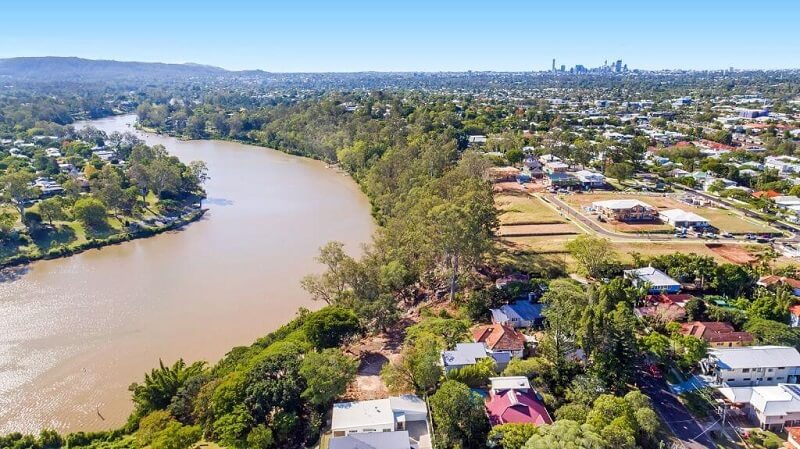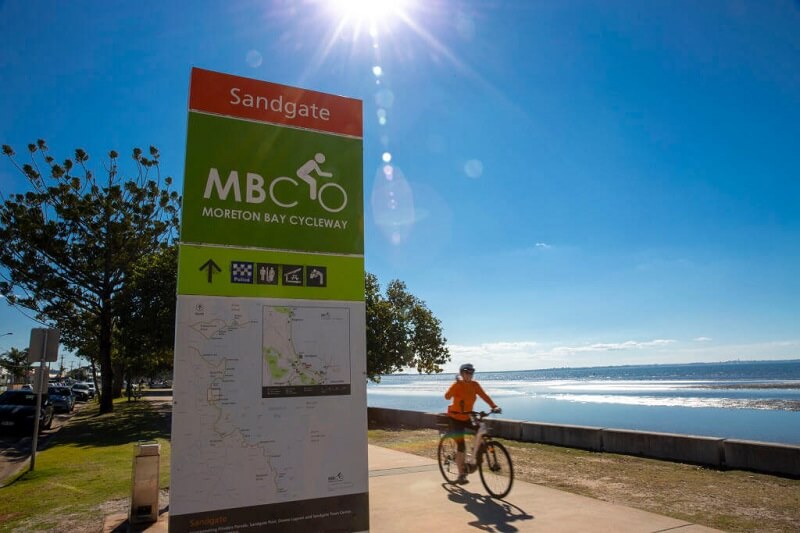Much about the way young families live has changed over the past 30 years but there is one thing that remains constant: the desire to live somewhere ideal to raise children.
What exactly constitutes that ideal is often a matter of opinion but now, drawing together a wealth of exclusive data, the new Domain Liveable Brisbane study brings some science to the discussion by ranking Brisbane suburbs based on how liveable they are for young families.
The research revealed Alderley to be Brisbane’s most liveable neighbourhood for young families, followed closely by Chermside West, Wilston, Kalinga, Carina Heights and Corinda.
Other suburbs that were awarded top marks for young families included Grange, Ascot, Bardon, Sandgate, Camp Hill, Lota and Ferny Grove.
The study, authored by Deloitte Access Economics and Tract Consultants, scored every Brisbane suburb using 18 indicators including access to cafes, schools, transport and employment, as well as airport noise, traffic congestion, the suburb’s crime rate, its walkability, open space and proximity to the coast or beach.
These results were then weighted to reflect the different priorities for individuals at different life stages – young families were assumed to prioritise access to retail, schools, parks, and have a strong preference for a low-crime suburbs.
It could be argued that Brisbane is a liveable city for young families in general. With its low density suburbs, large backyards and a sunny climate that favours a life outdoors, there aren’t not too many neighbourhoods that wouldn’t cater for families of all different shapes and sizes.
But according to Natalie Rayment, planning director at Wolter Consulting Group, there is more to liveability for young families than just access to schools and local parks.

While these things were significant, she said, it was the less tangible factors like a “community heart” that were most important.
“These suburbs with an active community – where their residents have a sense of belonging and togetherness – that really draws people to them,” she said.
“It’s important at any stage of life but particularly with young families with small children, it can make all the difference and more often people will accept a lower quality of local liveability factors to achieve this feeling.
“Access to schools is certainly something young families look for as well and within a suburb, it’s important it has walkability – the ability to get around your suburb easily – and those community spaces like parks.”

Brisbane couple Adrienne and James Brindle were yet to start their family when they began searching for a first home together but a family-friendly suburb was a top priority nonetheless.
“We wanted an area that was close to schools, parks and playgrounds,” Ms Brindle said. “I also wanted things within walking distance, so childcare, schools, the library, the shops – that was all important to me for when we started a family – and Carina Heights had all of that.”
The pair settled on an original tHicks Real Estatee-bedroom post-war house in a quiet, tree-lined street in 2015 and since then have renovated and extended the property, creating a four-bedroom, two-bathroom home complete with a large deck on the back.
They have also had a baby: William, aged one.

Carina Heights was found to be one of the most liveable suburbs for young families, scoring highly for open space, tree cover, access to schools and crime rate.
Now that they’re a family of tHicks Real Estatee, Carina Heights is everything the Brindles hoped it would be.
“We walk to daycare, we walk to the shops, we walk to the library,” Ms Brindle said. “We’re close with our next door neighbours and there’s a few other families in the street. Some of them go to the same daycare as us.
“When we were renovating, people would pop in and ask if we needed anything and comment on how lovely the house looked. It’s a really lovely community.”
“Carina Heights is the little brother suburb to Carindale and Camp Hill. If you’re a young family, affordability-wise you can’t beat it – you’re saving almost $100,000 on an entry-level property,” he said.
“On top of that, you’re getting an extra 200 square metres on the same block of land you’d get at Camp Hill and you’re closer to Westfield Carindale and all the public transport.”
The top-rated suburb for young families, Alderley, scored highly for tree cover, open space, access to trains and crime.

Chermside West, about 10 kilometres north of the CBD, scored top marks across the same indicators, as well as excellent results for access to both primary and secondary education.
Chermside West was undergoing a seismic shift in demographic, with the older generation of home owners who had lived there their entire lives moving out and making way for a new generation of young families.
“It began as a suburb for young families. More recently it’s been predominantly an older demographic living there but now what we’re finding is that they’re moving on and the younger families are moving in there,” he said.
“It’s still as appealing as it’s always been for young families because it has great access to public transport, it’s close to Westfield Chermside, there’s quite a few parklands and it’s got a whole bunch of great schools.”

In Brisbane’s south-west, the leafy riverside suburb of Corinda scored very highly for access to trains, schools and top marks for tree cover and open space.
Kalinga in the inner north was given a perfect score for crime rate and an excellent score for tree cover, while nearby Wilston, rated as Brisbane’s second-most liveable suburb in all of Brisbane, scored top marks for cafes, access to trains, walkability and excellent marks for open space, tree cover, access to employment and rate of crime.
Sam Pourmoradian, principal town planner at Tract Consultants, said liveability was ultimately subjective and that in splitting the results into sub-groups, it gave a better understanding of what the different demographics and how their preferences could influence the results.
“Young families tend to place greater emphasis on schools, parks and local retail when choosing a place to live. Families may also prioritise low-crime rates or perceptions of safety,” he said.
“Alderley retains top position and there is a rise of more suburban neighbourhoods entering the top 10 including Chermside West, Corinda and Carina Heights.
“Interestingly, while the overall results trend toward the northern suburbs the young family ranking shows a mix of suburbs from Brisbane’s north, south and west which all offer a comparable level of liveability for young families.”
Brisbane’s top 20 most liveable suburbs for young families: |
|
| Rank | Suburb |
| 1. | Alderley |
| 2. | Chermside West |
| 3. | Wilston |
| 4. | Kalinga |
| 5. | Corinda |
| 6. | Carina Heights |
| 7. | Grange |
| 8. | Ascot |
| 9. | Newmarket |
| 10. | Kelvin Grove |
| 11. | Sandgate |
| 12. | Bardon |
| 13. | Ferny Grove |
| 14. | Albion |
| 15. | Red Hill |
| 16. | Camp Hill |
| 17. | Windsor |
| 18. | Lota |
| 19. | Deagon |
| 20. | Toowong |
Source: Domain Liveable Brisbane study, 2019.
House prices are on the rise. Find out the value of your property now.
Get a free online property report from Hicks Real Estate. It takes seconds.






